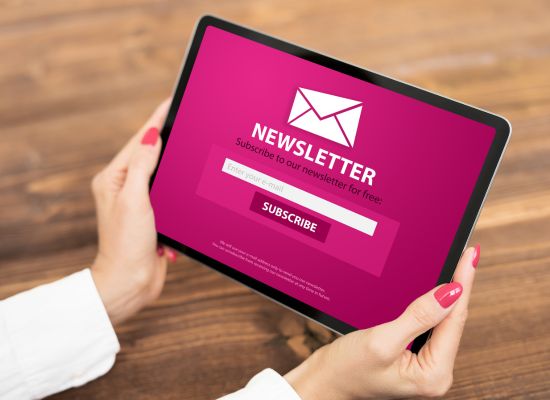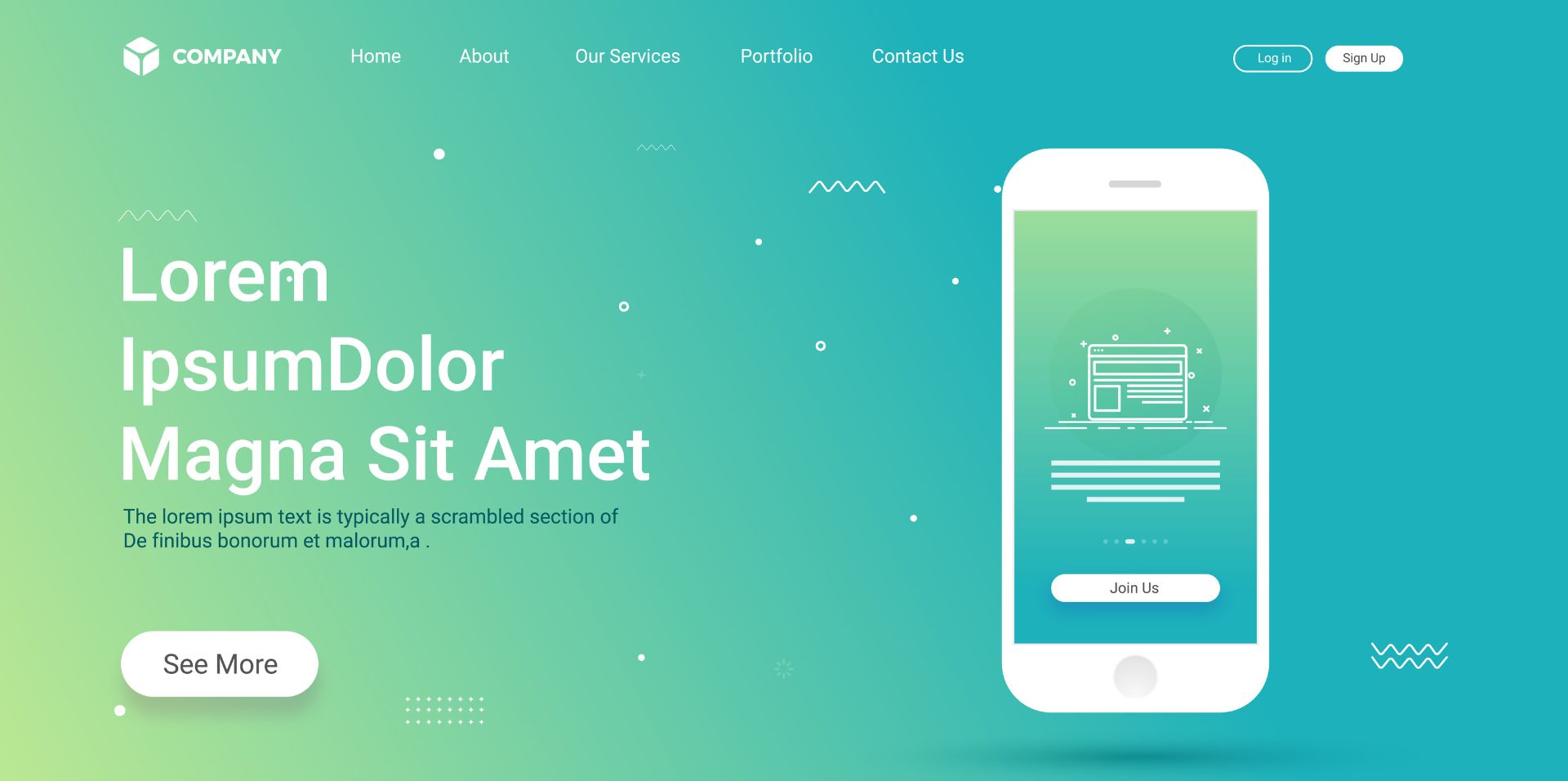Effective landing pages are a great way for your business to make a positive first impression with potential customers. When planning a landing page, investing time and strategic thinking into the design is essential to maximise its benefit and ensure it’s helping you achieve your digital marketing goals. Often used for PPC, social media, and email marketing, landing pages drive visitors to complete an action. How they’re designed directly impacts conversion rates and user experience.
In this guide, we’ll focus on 8 landing page design tips (bookmark for later), explore what makes an effective landing page, who is usually involved in the design process, and how you can refine them with A/B testing.
If your website or digital marketing campaigns have underperforming landing pages, get in touch with the team at britweb. Our digital marketing and web design experts can create compelling content and effective designs to help build your brand.
What is a landing page?
In digital marketing, a landing page is a standalone page specifically created for a marketing or advertising campaign. It’s the page where a visitor lands after clicking on a link from a search engine results page (SERP), email, ad, or social media post.
Contrary to general web pages that often serve multiple purposes and invite exploration, landing pages are crafted with a singular objective in mind, highlighted by a Call to Action (CTA). This focus could be encouraging users to register for a webinar, download a whitepaper, sign up for a free trial, or make a purchase.
Landing pages are crucial for converting visitors into leads or customers by guiding them towards your intended conversion goal. As a result, a great landing page can be a very important tool to meet marketing and sales objectives.
Essential landing page design tips
1. Set a clear goal
Before thinking about the visuals of the landing page and the content, it’s essential to have a defined goal for the page. You need to articulate the purpose of the page, who it’s being designed for (the target audience), and what action you want them to take.
An example would be:
- Purpose: A product launch for a new fitness tracker
- Audience: Fitness enthusiasts
- Action: Buy the new fitness tracker.
Two huge benefits of setting a clear goal are that it can help streamline the design process and help you measure success and performance. Ultimately, a landing page crafted with a focused goal is more likely to convert visitors, which is ideal for growing your business.
2. Strategically plan your layout
Effective landing page design starts with a strategic layout plan that guides visitors effortlessly toward your conversion goal. A well-thought-out layout organises information hierarchically, ensuring key elements like headlines, benefits, and the call-to-action (CTA) are prominently displayed and easy to navigate.
Start with a visual hierarchy that first draws attention to the most important information, supported by high-quality imagery and concise, persuasive text. Ensure that the CTA is unmistakable and accessible, encouraging immediate action.
3. Create engaging content
Compelling content is essential for a landing page’s effectiveness. Start with an attention-grabbing headline, then use clear, concise language to outline important features and benefits, emphasising how what you’re offering addresses the visitor’s needs. Adopt a tone that resonates with your target audience, making the message feel personalised and engaging.
Use bullet points for easy digestion of key points and include testimonials or customer reviews for added credibility. Every piece of content should drive towards action, culminating in a strong call-to-action (CTA) that clearly indicates the next step, be it signing up, purchasing, or downloading. By streamlining your content to engage and motivate, you enhance the likelihood of conversion.
Our content marketing services.
4. Choose high-quality, relevant imagery
The power of visual content in landing page design cannot be overstated. High-quality, relevant imagery captures attention and communicates your message more effectively than text alone. Selecting the right images for your landing page plays a pivotal role in engaging visitors, enhancing their experience, and guiding them towards the intended action.
Focusing on relevance, emotional impact, brand consistency, and inclusivity can help you choose effective imagery. This will allow the visuals to tell your story more effectively in the landing page layout, making a memorable impression that drives action.
5. Include a clear call-to-action (CTA)
CTAs serve as direct prompts, guiding users on what to do next. Without a clear, compelling CTA, even the most well-designed landing pages can fall short of their conversion potential.

Here are some design and placement tips:
- Ensure it’s visible: Ensure your CTA stands out by using contrasting colours from the rest of your page. It should be one of the first things a visitor sees. It also needs to be large enough to be easily clickable, especially on mobile devices.
- Be simple and direct: Use concise, action-oriented language for your CTA. Phrases like “Buy Now,” “Sign Up Free,” or “Download Here” leave no room for ambiguity about what the visitor should do next.
- Strategic placement: Place your CTA above the fold to immediately catch a visitor’s attention. Consider repeating it, once above the fold and again at the bottom of the page.
Focusing on the design and placement of your CTA can significantly increase the chances of turning visitors into leads or customers.
6. Limit distractions
This landing page design tip is about minimising distractions and reasons for visitors to exit your landing page, which is key to maintaining engagement and increasing the likelihood of conversion. Every element on your page should serve a purpose and contribute towards guiding website visitors to your CTA.
Here are strategies to keep users focused and reduce bounce rates:
- Streamline navigation: Hide or limit links that lead away from your landing page, such as complex menus or non-essential outbound links, ensuring that the path to conversion is clear and direct.
- Limit choices: Offer a singular, focused CTA that makes the decision-making process straightforward for the visitor.
- Engaging content: Keep your content directly relevant to the visitor’s interests and needs. Use headings, bullet points, and visuals to break up text, making it easier to digest and keeping the user’s attention.
- Load speed: Optimise your landing page’s load time so that it loads quickly. A slow-loading page is one of the top reasons visitors may leave before engaging with your content.
- Trust signals: Include elements that build trust and credibility, such as testimonials and clear contact information. This reduces the likelihood of exit due to uncertainty.
The goal is to create a seamless, compelling journey that naturally leads to conversion – the benchmark of a successful landing page.
7. Prioritise accessibility
Ensuring your landing page is accessible is crucial for reaching and engaging all users. An inclusive landing page design expands your audience and demonstrates your brand’s commitment to equality. You can enhance accessibility by using alt text for images, allowing users to adjust text sizes for better visibility, making sure your page can be navigated using keyboard shortcuts, offering video transcripts and captions, and using clear, straightforward language.
To test accessibility on your landing page and your website, you can employ tools to check and rectify any accessibility issues, adhering to standards like the Web Content Accessibility Guidelines (WCAG).
Our web accessibility services.
8. Conduct A/B testing
A/B testing, also known as split testing, is an invaluable strategy for landing page optimisation. It allows you to compare two versions of a page to see which performs better. You can gather data on what resonates most with your audience by making small, incremental changes to elements like headlines, call-to-action (CTA) buttons, images, colour palettes, or content layouts.
After running a test, analyse the data to see which version achieved a higher conversion rate. Then, look beyond just conversion rates; analyse metrics such as time on page and bounce rates to get a fuller picture of user engagement. You can thenimplement the winning elements from your tests and consider them in future landing page designs.
Landing page design FAQ
Who’s involved in designing a landing page?
Designing a landing page is typically a collaborative effort involving multiple professionals, each bringing their own expertise to ensure the page is both visually appealing and effective in achieving its goals. It often involves graphic designers, copywriters, web developers, user experience experts, SEO specialists, marketing managers, and other key stakeholders.
Each of these roles contributes to creating a landing page that not only looks great but also effectively converts visitors into leads or customers.
How important is mobile responsiveness in landing page design?
Mobile responsiveness in landing page design is crucial. It ensures that your page automatically adjusts its layout, images, and navigation for optimal viewing across devices, providing a seamless user experience. This not only improves user satisfaction but also positively impacts conversion rates, as users are more likely to engage with and take action on a page that is easy to navigate on their device.
Additionally, search engines like Google prioritise mobile-friendly websites in their rankings, making mobile responsiveness a key factor in SEO success as well.
How often should I update my landing page design?
It’s advisable to review and potentially update your landing page design periodically to ensure the content remains fresh, relevant, and aligned with current user preferences, SEO best practices, and landing page best practices.
While there’s no one-size-fits-all timeline, consider updating every 6 to 12 months. However, more frequent reviews might be necessary based on performance metrics, marketing strategy changes, or audience behaviour shifts.
Enhance your website with britweb’s web design services
At britweb, we have a highly skilled team of web design experts and digital marketing specialists with many years of experience in building landing pages that capture visitors’ attention and compel them to act, whether that’s signing up for a newsletter or buying a product. We work with businesses in a wide variety of sectors and have a proven track record of creating landing pages that convert as part of ongoing marketing strategies for SEO, PPC, social media marketing, and email marketing.
If you want to take the next step and enhance your landing pages or require a website design, please contact us today.
